Tina Brown: Princess Diana Would Not Have Been a ‘Great Fan’ of Meghan Markle
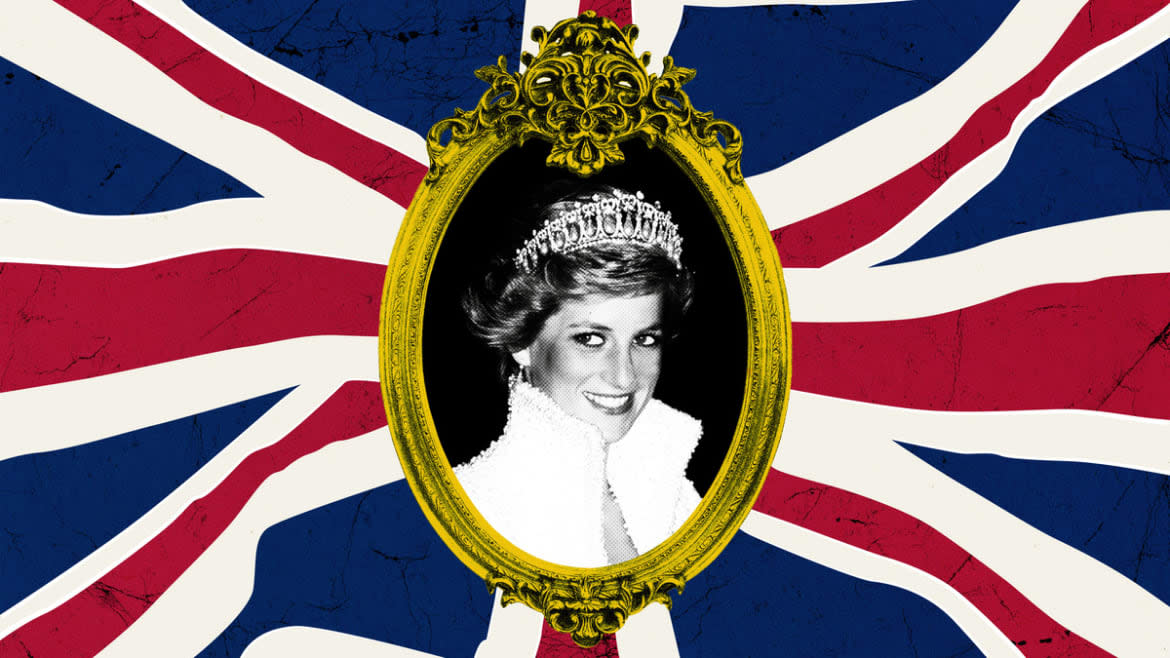
Welcome to this special edition of Royalist, The Daily Beast’s newsletter for all things royal and Royal Family, to mark the 25th anniversary of Princess Diana’s death. Subscribe here to get it in your inbox every Sunday.
Tina Brown: lunch with Diana just before she died
The month before she died, Princess Diana was stuck between two worlds: excited for her post-royal future, while all too aware of being hounded by the press in the present.
On the 25th anniversary of Diana’s death, Tina Brown, author of The Diana Chronicles and The Palace Papers—and founding editor in chief of The Daily Beast—recalled a lunch she had with Diana in New York in July 1997 at The Four Seasons, with Anna Wintour.
“Diana was really on top form and in many ways in her stride in a pale green suit with those amazing supermodel legs and incredibly limpid blue eyes,” Brown told The Daily Beast. “She was absolutely stunning in real life, and so much taller than you thought. She talked about two things. She was really excited about starting to do documentaries about her causes, and for that to fund her humanitarian work. In some ways, it was a foreshadow of Harry and Meghan’s plan 25 years ago, with the one major difference that Diana didn’t see any profit in it. She was doing it as a charitable venture.”
Why Princess Diana Will Never Die
Diana, said Brown, also talked about how much she hated August, with sons Harry and William away at Balmoral. She was looking for somewhere to stay. Brown recalled, “I said, ‘Surely everyone wants you to stay with them.’ And she said ‘No, having me to stay means you have the press rummaging around in dustbins and paparazzi helicopters flying overhead. It’s a misery. It’s very hard to have me to stay. This is the reality of my life.’ That struck me as poignant. Obviously she was lonely, and looking for somewhere safe to be.”
“The reason she with was with Dodi (Fayed, her then-partner) on that boat that summer was, as she said at our lunch, ‘He has all the toys,’ by which she meant he had helicopters, boats, and bodyguards. Going to stay with Dodi meant being safe from all that intrusion, but of course on that awful night the opposite was true.”
Early in the morning of Aug. 31, 1997, Brown recalled she had been woken at her home on Long Island by the news media, delivering news of Diana’s death.
“Like most people, I was stunned. I had seen the images from the night before of Diana arriving in Paris with Dodi in the middle of what looked like a typical glamorous summer holiday. It was inconceivable, unbelievable, that she was dead.”
Diana, said Brown, would be “very unhappy” that her two sons remain estranged. “She never questioned that William would be king. It was her most ardent desire he would become king. She was never anti-monarchy in that regard. She had differences with the royal family—her biggest difference was that her husband wasn’t in love with her, he was in love with someone else. But she never thought for one minute that William would not be the future king, and that Harry would always be there to support him. She would not be happy with how things are.”
People say to Brown that Diana would have been pleased that Harry had walked away from the royals, “but Diana would not have been pleased how Harry had been cut off from the family.”
How would Diana have felt about Meghan Markle? “Diana was very protective of her boys,” Brown told The Daily Beast. “She would have been very, very protective of Harry and I believe very anxious about this direction they’ve taken. I think she would have felt Meghan was steering Harry in a direction that was not good for Harry. I don’t think Diana would have been the great fan of Meghan that Meghan herself might perhaps imagine.”
However, Brown thinks Diana would have been “thrilled” when Harry met Meghan, “and that her son was happy. She would have been delighted, supportive and thrilled someone of mixed race was joining the royal family because Diana was so inclusive.
“It’s very difficult to know how fragile Harry would have been if his mother hadn’t died. He was obviously utterly traumatized by her death. But the Spencers are a fairly turbulent family. Other members of that family, including Diana herself, have not been without their fragilities and neuroses. Harry may have inherited that Spencer turbulence. It’s always about drama in the Spencer family. With Harry, it could just be the genes speaking.”
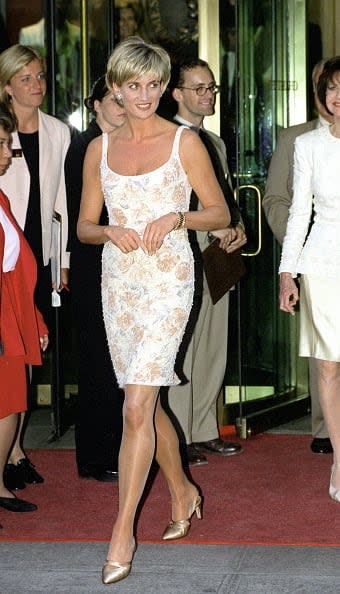
Diana, New York, June 1997.
Brown believes that, had Diana lived, she would have become an even bigger global celebrity and humanitarian powerhouse.
“She kept Kensington Palace as her base. Unlike Harry and Meghan she understood having the power base of monarchy was enormously important. Today, I believe she would have had billions of followers on Instagram, and used that to the max. By now, her charitable foundation would have been as big as Bill Gates’. She began that global humanitarian celebrity outreach that we went on to see with the Clooneys and Bono. She’s a real forerunner of that. It’s very tragic to know that didn’t happen.”
Her influence on the monarchy remains intense.
“The scorched earth left by Diana still smolders,” Brown said. “For the first ten years after her death, the royals were still destabilized by the catastrophes surrounding Diana—from her divorce, the damage to Charles, the car crash, the effect on the boys. The rise of Kate (Middleton) and William have done a great deal to reduce that dark dust, and decrease the Diana decibel.
“But with what Harry and Meghan have said and done, the next season of The Crown (which will focus on events leading up to and after Diana’s death) and Harry’s memoir will resurface a particular agony for Charles. The queen was re-stabilized after the death of Diana, whereas Charles has continually battled to end those ghosts. The rehabilitation of Camilla’s image has been utterly successful, but she lives in dread of Harry’s book. In some ways, Diana’s ghost still rattles at the gate.”
How the royal family does or not mark Diana’s death is in William and Harry’s hands, said Brown. Both have said that while they don’t want to forget their mother and her significance, they want to move on from all the talk of her death, and the “endless reopening of old wounds, the way she died, and the agony of it all,” as Brown put it. “In terms of the wider monarchy, for Charles it is his ex-wife. This is not going to be considered the kind of anniversary they mark. They see it more now as a private issue.”
For Brown, the crash that killed Diana was no conspiracy, but the result of “a drunk driver, and had Diana worn a seatbelt I think she would have been alive today. There was no police driver alongside them. And they were being chased by the paparazzi. It was a terrible accident. I don’t think there was anything criminal about it.”
Why does Diana still endure as such a resonant icon? “Diana’s life was cut short at a moment she was at the prime of her beauty,” Brown told The Daily Beast. “We met her first at a blushing teenager. We followed her life. She shared her vulnerability with us. There are elements of the classic fairytale about her life, and her story will go on being told again and again.” Tim Teeman
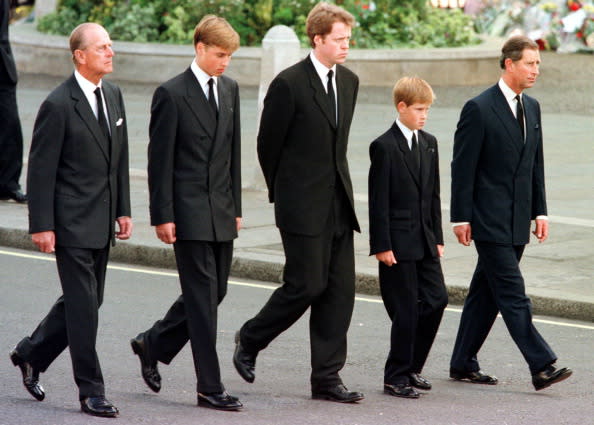
"(L to R) The Duke of Edinburgh, Prince William, Earl Spencer, Prince Harry and Prince Charles walk outside Westminster Abbey during the funeral service for Diana, Princess of Wales, September 6, 1997.
Harry’s feud with William extends to claiming mom’s legacy
Of all the images associated with Princess Diana’s death, the most haunting remains the sight of her two children, William, then 15, and Harry, 12, walking solemnly behind her coffin.
While the world may have wanted to believe that their mother’s death would bind them together forever, there is little denying that, on the 25th anniversary of her death, the brothers’ naked contempt for each other is now so intense that it would pain any parent.
Some might therefore say, given that context, that it is odd how Harry, in particular, has sought to regularly invoke his mother’s legacy as justification for the way he and Meghan Markle left the royal family—and even claimed he is in receipt of otherworldly spirit guidance and assistance from her.
Harry has made no secret of the fact that being made to participate in that very public way in the funeral remains a major source of his resentment against his family. He previously said that walking behind her coffin aged 12 was something no child “should be asked to do,” and once again revived the trauma of that day in his AppleTV show about mental health, The Me You Can’t See.
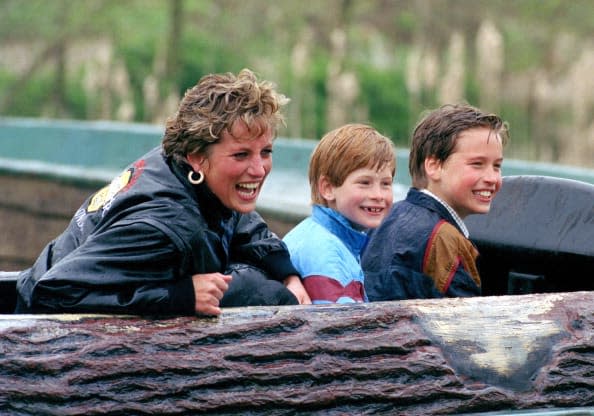
Diana with Harry and William at Thorpe Park amusement park in 1993.
“For me the thing I remember the most was the sound of the horses’ hooves going along the Mall,” Harry told his co-host Oprah Winfrey.
“It was like I was outside of my body and just walking along doing what was expected of me. (I was) showing one-tenth of the emotion that everybody else was showing: This was my mum—you never even met her.”
He has also claimed that his mother would have approved of his exit from the royal family and subsequent media interviews, telling Winfrey: “I’ve got a hell of a lot of my mum in me. The only way to free yourself and break out is to tell the truth.”
Harry also told Winfrey that he believed his mother had left him a large amount of money because she could foresee that he would one day need it to escape royal life.
He said: “I've got what my mum left me, and, without that, we would not have been able to do this… So, you know, touching back on what you asked me, what my mum would think of this, I think she saw it coming. And I certainly felt her presence throughout this whole process.”
In an interview with James Corden, Harry added: “I have no doubt my mum would be incredibly proud of me, living the life she wanted for herself. I know she’s incredibly proud of me... she has helped me get here. I have never felt her presence more than in the past year. I wish she could have met Meghan, I wish she was around for Archie.”
Earlier this year Harry told Hoda Kotb: “It is almost as though she has done her bit with my brother [Prince William], and now she is very much helping me… and now she is helping me set up. He’s got his kids and I’ve got my kids. The circumstances are obviously different, but I feel her presence in almost everything that I do now, but definitely more so in the last two years than ever before, without question.” Tom Sykes
French medic recalls his “last moments” with Diana
Dr. Frederic Mailliez, the French doctor who tried to help Diana as she lay critically injured in the moments after the crash, has recalled that night in a new interview with the Associated Press.
“I realize my name will always be attached to this tragic night,” Mailliez, who was on his way home from a party, told the AP. “I feel a little bit responsible for her last moments.”
“I walked toward the wreckage. I opened the door, and I looked inside,” he recalled, seeing “four people, two of them were apparently dead, no reaction, no breathing, and the two others, on the right side, were living but in severe condition. The front passenger was screaming, he was breathing. He could wait a few minutes. And the female passenger, the young lady, was on her knees on the floor of the Mercedes, she had her head down. She had difficulty to breathe. She needed quick assistance.”
“She was unconscious,” he continued. “Thanks to my respiratory bag (...) she regained a little bit more energy, but she couldn’t say anything.”
“I know it’s surprising, but I didn’t recognize Princess Diana,” Mailliez told the AP. “I was in the car on the rear seat giving assistance. I realized she was very beautiful, but my attention was so focused on what I had to do to save her life, I didn’t have time to think, who was this woman. Someone behind me told me the victims spoke English, so I began to speak English, saying I was a doctor and I called the ambulance,” he said. “I tried to comfort her.”
The emergency services soon arrived, and Diana was taken to hospital.
“It was a massive shock to learn that she was Princess Diana, and that she died,” Mailliez said. He asked himself: “Did I do everything I could to save her? Did I do correctly my job?... I checked with my medical professors and I checked with police investigators,” he added. All agreed he had done all he could.
Subscribe here to get all the latest royal news and gossip with Tom Sykes and Tim Teeman.
What if she had lived?
Imagine: What would Princess Diana be doing now, at the age of 61?
She would be in her prime, serving the world wherever she could, probably at this moment in Ukraine, helping war-orphaned children.
She would have 500 million followers on Instagram. Her fan base would range from boomers to Gen Z.
She was the first truly global celebrity and, had she lived, she would be far more mature about how to handle that level of celebrity, how to leverage her singular human qualities of connection and hope into programs that delivered.
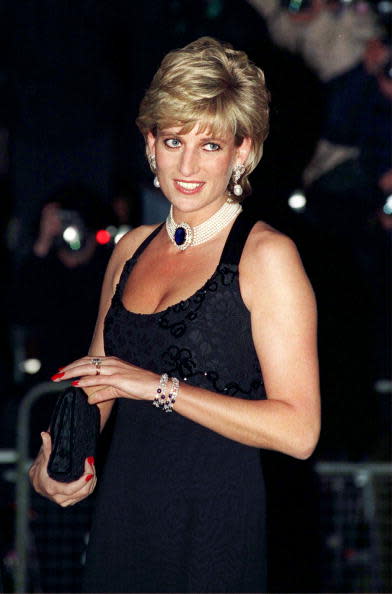
Diana, Princess Of Wales, London, 1995.
The unhappy mess of her marriage to Charles would be ancient and boring history, her escape from the toxic orbit of the Windsors complete, and Harry and William would never have fallen out, for want of a mother’s guidance and love. The parental bond was too strong.
Oddly enough, Queen Elizabeth would likely have found it easier to deal with Diana alive than with her ghost, a constant ethereal presence offering a lens through which the family never looks good, and with whom there is no mediation. Diana’s spectacular personality had no equal and the monarch’s strength has always been in not being spectacular. They would have come to terms, each holding their own very different territory, and the queen’s family would have fallen into line – except, perhaps, Charles, who is never happy being eclipsed.
How Princess Diana Wore Every Outfit to the Max
Yes, it is imaginary. But this trajectory has an origin story that is not.
Diana had three months to live when Tony Blair, then Britain’s new prime minister, realized her extraordinary public popularity and decided to enlist her in his ambitious plans to modernize the country.
Blair’s “new” Labour Party swept to power on May 1, 1997, with a landslide victory. A few weeks later, he invited Diana and her sons to Chequers, the prime minister’s official country retreat, to explore what part she might play in promoting his ideas.
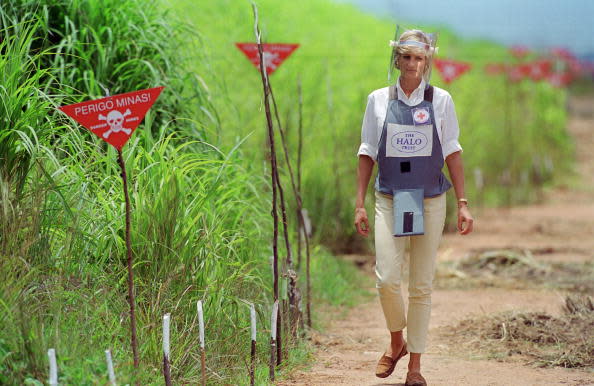
January 1997: Diana, Princess of Wales wearing protective body armor and a visor visits a landmine minefield being cleared by the charity Halo in Huambo, Angola.
Sooner than many people, Blair and his spinmeister, Alastair Campbell had grasped an essential point about Diana’s power (and value to them): She had become a one-person third force to the British people, a focus for the aspirations and hopes of millions who felt that neither the political class nor the monarchy were able to know and inspire the best of the country’s qualities.
The meeting went well. Diana offered her ideas in a series of letters that followed. Campbell noted later in his diary that Diana would be a real asset, “a big part of ‘New Britain.’”
When Blair got word from Paris of Diana’s death he presciently told Campbell: “People will be in a state of real shock. There will be grief that you would not get for anyone else. If the Queen died there would be huge sadness and respect but this will lead to an outpouring of grief. This will confirm her as a real icon.”
You can see just how true that was in the last minutes of the new HBO documentary, The Princess.
It was the loss of an irreplaceable national asset. Unlike the Windsors, Diana’s ancestry was deeply British. The Spencers could be traced back to 1478 and were intertwined with the Churchills. People sensed that quality in her. It was authentic, and not in any sense the xenophobic Little England dementia that led to Brexit.
Had she lived, she would surely have been a powerful voice against Brexit— possibly even a decisive one. As she showed with her campaign to clear land mines in former war zones that were killing and maiming children, she was global in her concerns and her activism.
In fact, by now she would have been long established as one of those rare people who transcends nationality to become a true citizen of the world, like Nelson Mandela—they met just months before she died and the rapport was instantaneous. Clive Irving
The main players, 25 years on
Princes William and Harry: The grief-stricken brothers of 1997 remain, as adults, locked in a long-running feud. Both sought to channel their mother’s legacy in their own ways, even if Harry has been the more explicit of the two (see above). While Harry has become more voluble about his mother in recent years, William has gone in the opposite direction, and only speaks about his mother occasionally and in a circumspect manner. William has definitively joined the establishment but his mother would not disapprove; she was, ultimately, a monarchist and very much wanted him to be king (just with Harry by his side).
Prince Charles: Diana’s ex-husband’s popularity has slowly recovered after the PR disaster of the Diana years. It could be argued that the death of his first wife probably enabled him to marry Camilla. Even if a wedding had eventually happened, it’s certainly hard to imagine the queen naming Camilla a future queen if she had survived. The next series of The Crown, featuring the end of his and Diana’s marriage and her death, and Harry’s memoir may yet spell more agony for him.
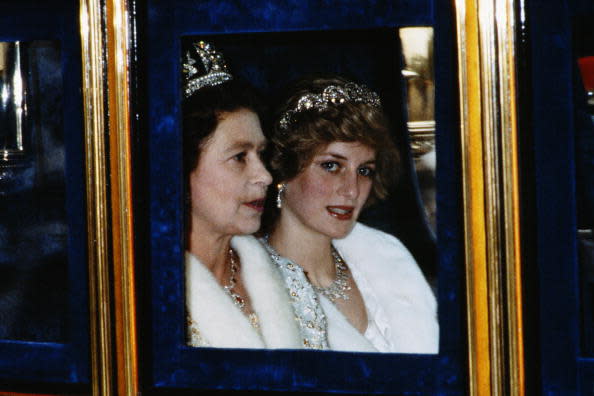
The Princess of Wales and the Queen attend the Opening of Parliament in London, November 1982. Diana is wearing a white fur coat and the Spencer tiara.
Queen Elizabeth: It is often casually written that the queen has never put a foot wrong in her long reign, but, at the risk of facing treason charges, it has to be acknowledged that she handled the death of Diana abysmally; so abysmally, in fact, that for a few days it seemed possible the monarchy could actually fall. In the end, however, she came good, and her live speech, after a week of chaos remains a masterclass in ship-steadying.
It began: “Since last Sunday's dreadful news we have seen, throughout Britain and around the world, an overwhelming expression of sadness at Diana’s death. We have all been trying in our different ways to cope. It is not easy to express a sense of loss, since the initial shock is often succeeded by a mixture of other feelings: disbelief, incomprehension, anger - and concern for those who remain...”
Since then, Queen Elizabeth has battled through multiple family crises, and despite health concerns of her own, emphatically stole the show at her own Platinum Jubilee in June. Today, on the 25th anniversary of Diana’s death, the queen stole the headlines, with the confirmation announcement that—due to her own health concerns—she will appoint Britain’s new Prime Minister next week at Balmoral.
Why Princess Diana Will Never Die
Earl Spencer: Charles Spencer, Diana’s younger brother, delivered a memorable funeral eulogy which tore into the royal establishment and declared her “the most hunted person of the modern age” and pledged he and her “blood family” would protect William and Harry. Spencer lives on and manages the Althorp estate, the Spencers’ ancestral seat in Northamptonshire, where Diana is buried. He has seven children, including one, Lady Charlotte Diana, by his third wife, Karen, whom he married in 2011.
Hasnat Khan: Diana dated the heart surgeon Hasnat Khan for two years and nicknamed him “Mr Wonderful.” He now lives in Essex, England, and, according to the Daily Mail, does humanitarian work in Saudi Arabia, Ethiopia and Pakistan. The seriousness of their relationship is evidenced by the fact that Diana secretly met his family. According to her friend Jemima Khan’s 2013 Vanity Fair article this was “to discuss the possibility of marriage.”
Trevor Rees-Jones: The only survivor of the car crash that killed Diana, Trevor Rees-Jones, now known as Trevor Rees spent weeks in a coma and had every bone in his face broken by the crash. Rees, 54, was recently photographed by British tabloid the Sun waiting for his family (he has a wife and two children) in Shropshire, England, as they did their shopping.
As The Daily Beast reported, scars are still visible on his face.
He reportedly “earned a fortune as security director” for oil firm Halliburton, and is now head of security for drug company AstraZeneca, the Sun says.
A source was quoted by the Sun as saying: “Trevor is living a peaceful life. The enormity of what happened that night is still with him and the scars are visible. His life is quiet and uneventful now. He certainly doesn’t court publicity or speak much about it. He’s tried to move on and get on with his life.”
Mohamed Al-Fayed: the Egyptian-born father of Diana’s last boyfriend, Dodi, who was also killed in the Paris car crash, still lives at his estate in Oxted, Surrey, where Dodi’s remains are interred in a private mausoleum. He is 93. He spent many years after Diana’s death accusing the Duke of Edinburgh and the British security services of having orchestrated the crash that killed his son and Diana, saying they could not accept Diana marrying a Muslim. He has four other children with his Finnish wife Heini Wathén, whom he married in 1985, some of whom are said to be feuding over his estimated $1billion+ fortune.
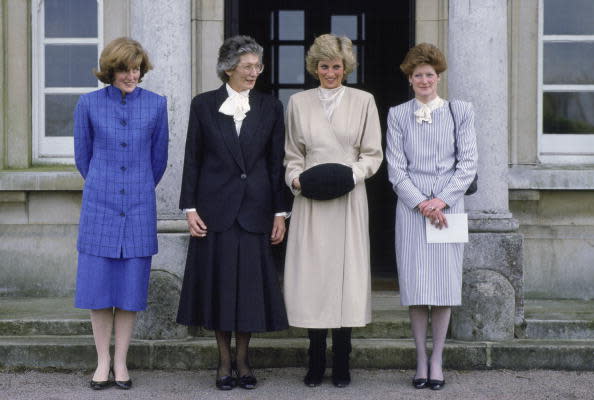
Princess Diana with her sisters, Lady Jane Fellowes and Lady Sarah McCorquodale, meeting the headmistress of West Heath School.
Lady Sarah McCorquodale and Lady Jane Fellowes: Lady Jane and Lady Sarah both flew to Paris with Charles to escort Diana’s body home, but Diana’s sisters have maintained a much lower profile than their brother since Diana’s death. Lady Sarah, who once dated Charles, and her husband Neil have three children and live a quiet, rural existence exemplified by the fact that she became the first female master of the Belvoir Hunt in May 2010. Lady Jane is married to Robert Fellowes, a former private secretary to the queen. She read the lesson at Harry’s wedding.
James Hewitt: The playwright Jon Conway who collaborated with Hewitt—who had an affair with Diana—to write Conway’s play Truth Lies Diana told The Daily Beast: “James is living a frugal, but peaceful and quiet life in Exeter with his very aged mother. He remains unfairly castigated by most of the very media who printed their own untruths and made fortunes out of him, but derided him for the one occasion he tried to tell his own story. James has never published the letters he was accused of peddling and never publicly told his version of what actually happened. How he could have done with that kind of money now!
“Having suffered two major illnesses over recent years, when I last spoke to him in June this year he just wants to stay out of the media spotlight and not stir up any controversy. In Harry’s upcoming ‘tell-all’ book, it will be interesting if he pays thanks to the man who helped raise him and his older brother. For many years in their young lives, the princes often saw more of James than they did of Charles.
“I got to know James quite well over a couple of years. It is clear how his gracious charm would have captivated Diana and that they made each other happy for many years is certainly true. Few relationships end well, but James has paid a huge price.
“Probably what hurt him most was that as a third generation soldier in his family, he was drummed out of the service. As my play Truth Lies Diana quoted, his commanding officer told him, ‘Charles is your brother officer. It is an outrage to have an affair with the wife of another officer.’
“James’ pithy and cavalier reply was: ‘Perhaps you should tell Charles that too, as he is shagging his brother officer Parker Bowles’ wife!‘” Tom Sykes
What Will the Queen and Charles Do to Remember Diana on the 25th Annivesary of Her Death? Nothing
Diana, Princess of Wales, NOT The Princess of Wales
In 1997, when Princess Diana died, I was working at the London newspaper the Evening Standard (Tom Sykes writes). It was my first job, and I clearly remember my amazement that among the most intense “bollockings” that journalists were receiving in those bizarre days (made even more bizarre for us, as our office was on Kensington High Street, a few hundred yards from Kensington Palace) were about what they called Diana in the paper.
The royals have so many different names and nicknames that you can often happily revolve between three or four of them before you hit what is known in journalistic circles as the “knobbly monster” moment. A “knobbly monster” is tabloid newsroom slang for that tricky fourth or fifth reference in copy to your subject, when you’ve already used the obvious words for it, and you end up calling, for example, a large vegetable something daft like a knobbly monster.
The problem was that people kept referring to her as “The Princess of Wales” (her title when she was married to Charles) rather than “Diana, Princess of Wales”, the new style invented for her after her divorce, when she had been stripped of her HRH, a move which the queen was said to have considered ill-advised, but that Charles apparently insisted on. William is reported to have told his mother: “Don’t worry, Mummy, I will give it back to you one day when I am king.”
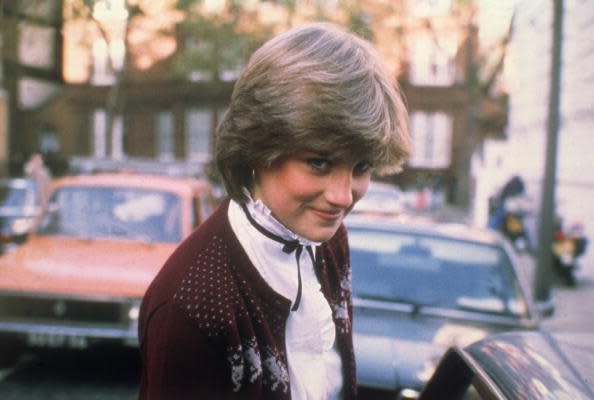
Then-Lady Diana Spencer, leaving her flat at Coleherne Court in Earl's Court, London, November 12, 1980.
There was even a short-lived notion of posthumously restoring her HRH: Buckingham Palace were said to have consulted the Spencer family on the issue on the Royal Train which conveyed the Spencers, Prince Charles, Prince William and Prince Harry to Northamptonshire for the Princess’s burial service.
The Spencers, apparently, declined the offer.
Evening Standard editor Max Hastings was adamant that we refer to her correctly as Diana, Princess of Wales.
“If we can’t get her name right, why should the readers trust us about anything else?” he would fume, as he flung down yet another copy of the newspaper on the newsdesk with the offending phrase, “The Princess of Wales” circled in blue felt tip pen and an unlucky reporter (often me) preparing to feel his wrath.
It seemed such a trifling matter in the context of what was going on.
It was only years later that I truly understood the real point of her new name; the palace downgraded her title to try and make her less influential, powerful and important.
It didn’t work.
Twenty-five years later, the effort to obscure the memory of her influence is still ongoing. Witness, for example, Prince William’s demand that the BBC Panorama interview with her never be shown again (to which the BBC has shamefully agreed) on the basis of his objections over Martin Bashir’s trickery, or the fact that there is no official commemoration of her death today in the U.K.
The royal establishment is still doing everything it can to airbrush her out of history—and still failing to achieve it.
Love The Daily Beast’s royal coverage? Sign up here to get Royalist newsletters sent straight to your inbox.
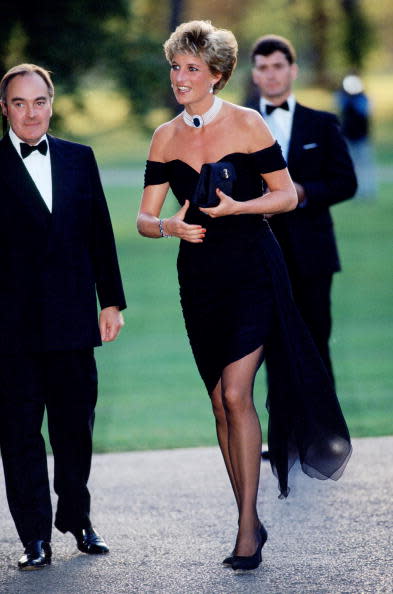
Diana, wearing the famous black cocktail "revenge dress" designed by Christina Stambolian, at the Serpentine Gallery in Hyde Park on June 29, 1994 in London, England.
Get the Daily Beast's biggest scoops and scandals delivered right to your inbox. Sign up now.
Stay informed and gain unlimited access to the Daily Beast's unmatched reporting. Subscribe now.

 Yahoo News
Yahoo News 
